26 of the Most Notorious Mobsters in U.S. History
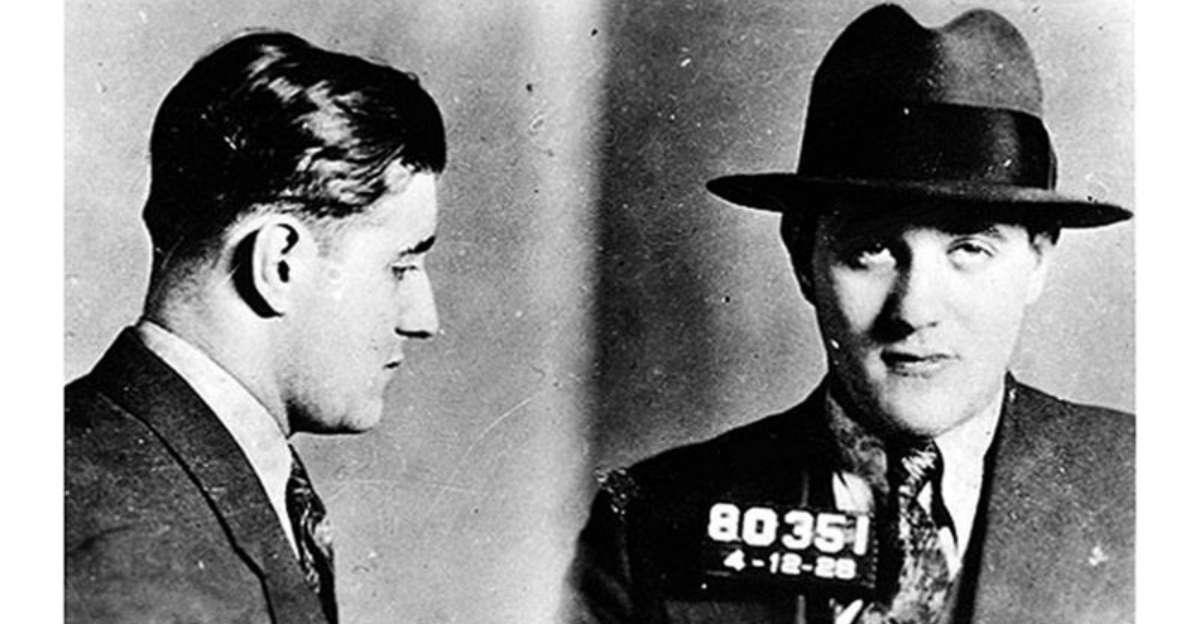
America’s underworld has been shaped by cunning, ruthless figures who built criminal empires through violence and intimidation. From Prohibition bootleggers to modern-day crime bosses, these mobsters left bloody footprints across our nation’s history.
Their stories continue to fascinate us, blurring the lines between criminal and celebrity in America’s complicated relationship with outlaws.
1. Al Capone: Chicago’s Brutal Boss
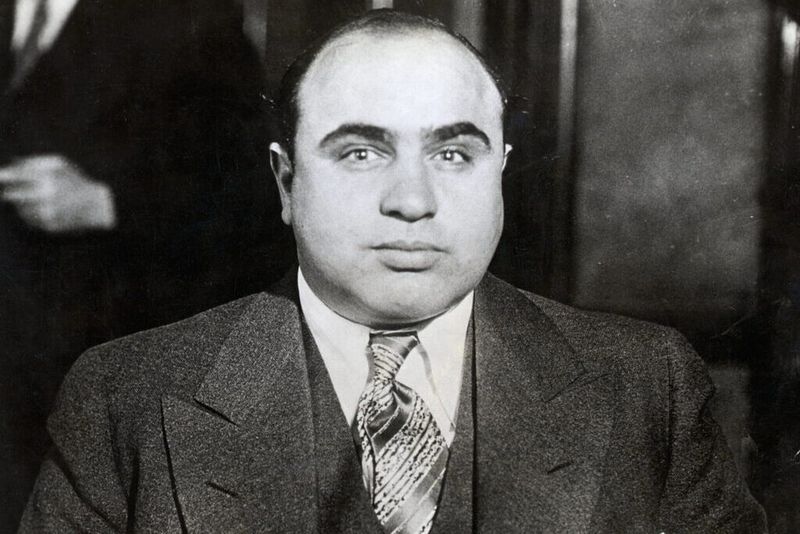
Scarface ruled Chicago’s underworld during Prohibition with an iron fist. His criminal empire generated millions through bootlegging, gambling, and prostitution. Despite his ruthless reputation, Capone maintained a public image as a businessman and philanthropist.
The Valentine’s Day Massacre of 1929 cemented his notoriety, though ironically, tax evasion—not murder—landed him in Alcatraz. His legacy as America’s most iconic gangster endures nearly a century later.
2. Lucky Luciano: Father of Organized Crime
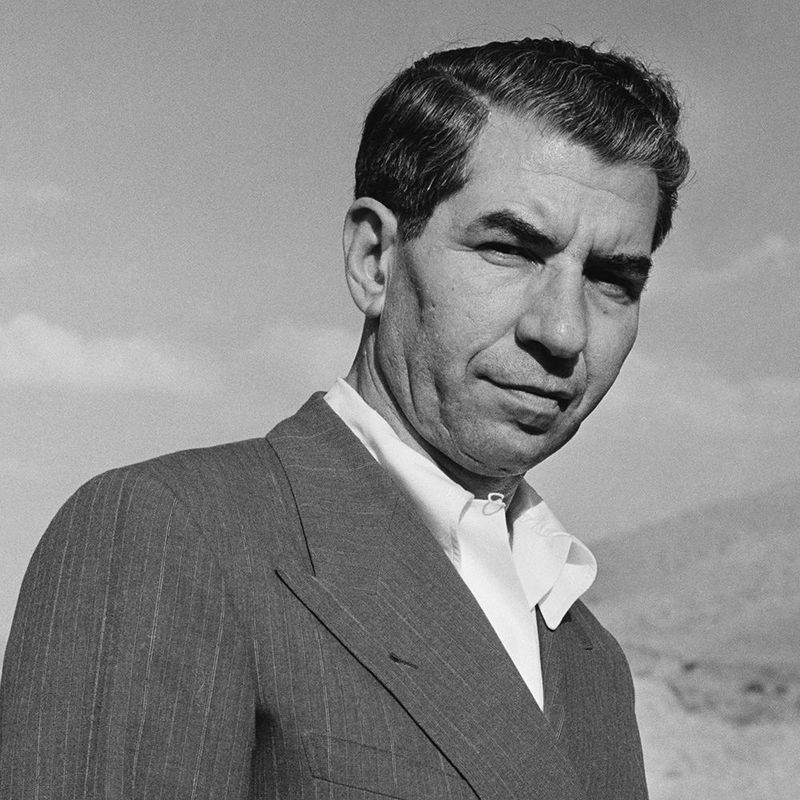
Revolutionizing the mafia’s structure, Luciano transformed scattered gangs into a sophisticated national syndicate. Born in Sicily, he rose through New York’s criminal ranks with calculated precision and ruthless efficiency.
His genius lay in treating crime like a business, establishing the “Commission” that governed mob families.
Though eventually deported to Italy, Luciano’s organizational blueprint became the foundation for modern organized crime in America, earning him the title of the mob’s true architect.
3. Bugsy Siegel: Las Vegas Visionary

Handsome and volatile, Benjamin “Bugsy” Siegel turned a desert outpost into America’s gambling paradise. His vision for Las Vegas materialized in the Flamingo Hotel, though cost overruns and suspected skimming proved fatal.
Murder came calling in 1947 when shots through a Beverly Hills window ended his life. The glamorous gangster never saw his Vegas vision fully realized, yet his legacy lives on in every neon sign on the Strip.
4. Meyer Lansky: The Mob’s Accountant
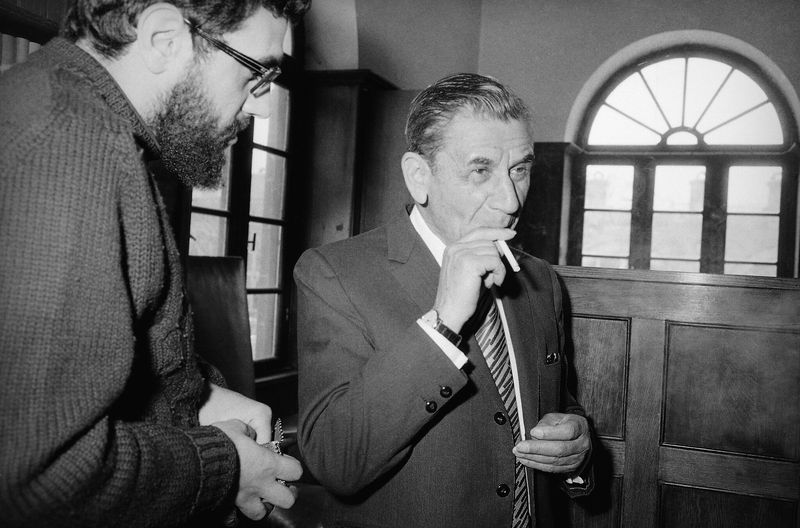
Financial wizard Meyer Lansky built an international gambling empire while keeping a remarkably low profile. Unlike flashier gangsters, he preferred working behind the scenes, using his mathematical brilliance to launder millions.
Federal authorities called him the “Mob’s Accountant,” yet never secured a major conviction against him. Lansky’s criminal genius lay in his ability to hide illegal profits within legitimate businesses.
He famously quipped that organized crime was “bigger than U.S. Steel,” and his offshore banking innovations still influence modern money laundering.
5. John Gotti: The Dapper Don
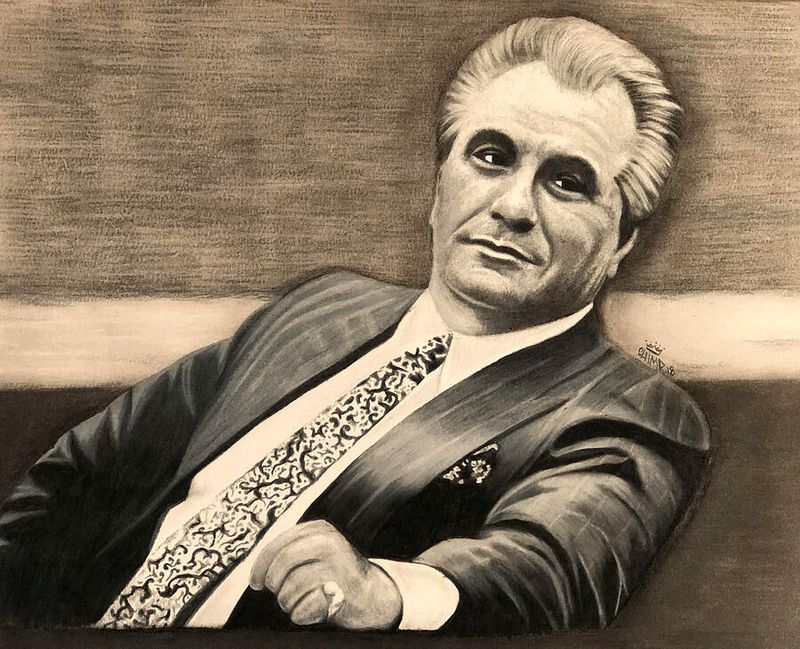
Flamboyant and media-savvy, Gotti broke the mob’s code of silence with his high-profile lifestyle. His immaculate suits and celebrity status earned him the nickname “The Dapper Don” while he ruled the Gambino family with brutal efficiency.
After orchestrating the public assassination of boss Paul Castellano in 1985, Gotti became America’s most famous gangster. His reign ended when underboss Sammy “The Bull” Gravano turned government witness.
6. Whitey Bulger: Boston’s Brutal Informant
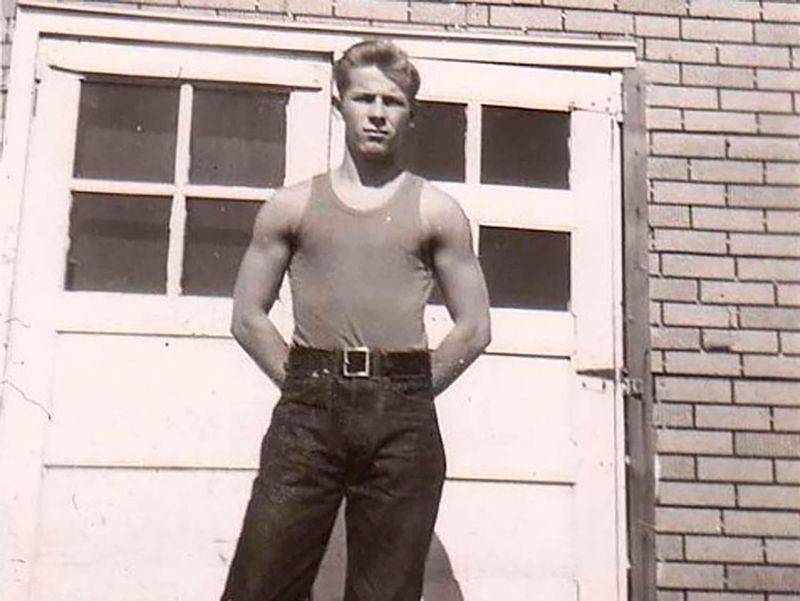
James “Whitey” Bulger terrorized Boston for decades while secretly working as an FBI informant. His Winter Hill Gang controlled drug trafficking, loan-sharking, and extortion throughout New England with merciless violence.
The corrupt relationship with his FBI handler allowed Bulger to eliminate rivals while evading justice. When finally exposed, he vanished for 16 years, landing on the FBI’s Most Wanted list.
Captured in 2011, the aging gangster received two life sentences before being murdered in prison in 2018.
7. Frank Costello: The Prime Minister
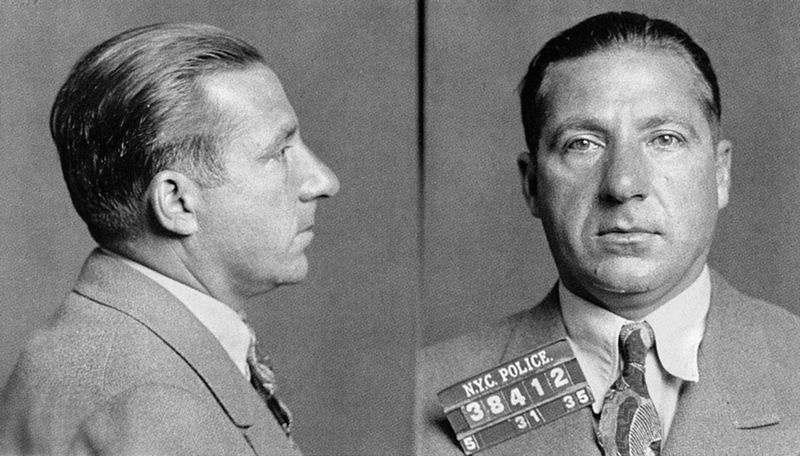
Sophisticated and politically connected, Costello operated with a businessman’s polish rather than a gangster’s brutality. His influence reached deep into New York politics, making him one of organized crime’s most powerful figures.
Unlike his peers, Costello avoided bloodshed when possible, preferring bribery and negotiation. His gravelly voice and quiet authority commanded respect across the underworld.
A 1957 assassination attempt by rival Vito Genovese left him wounded but alive, prompting his retirement from the mob.
8. Dutch Schultz: Beer Baron’s Bloody Reign
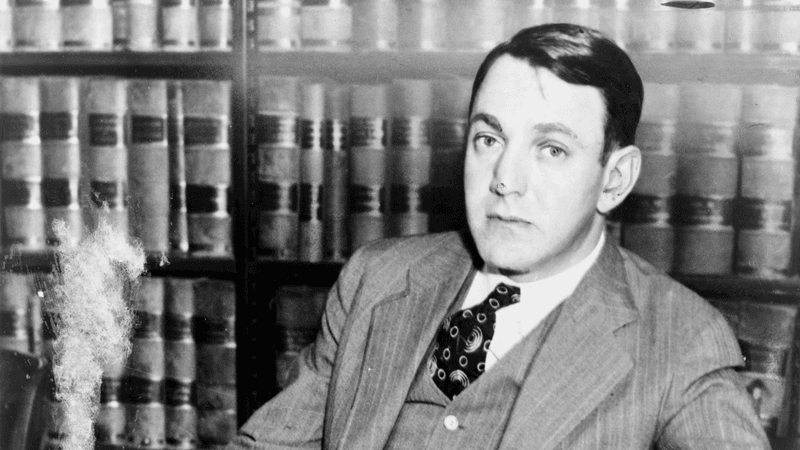
Born Arthur Flegenheimer, Dutch Schultz dominated New York’s bootlegging scene with savage efficiency. His hair-trigger temper and unpredictable violence made him feared even among fellow gangsters.
Schultz expanded into numbers rackets in Harlem, brutalizing competitors and collecting millions. His downfall came when he threatened to murder prosecutor Thomas Dewey against the Commission’s orders. Before he could act, other mob bosses ordered his elimination.
Schultz passed away in 1935 after being gunned down in a Newark restaurant.
9. Carlo Gambino: The Quiet Don
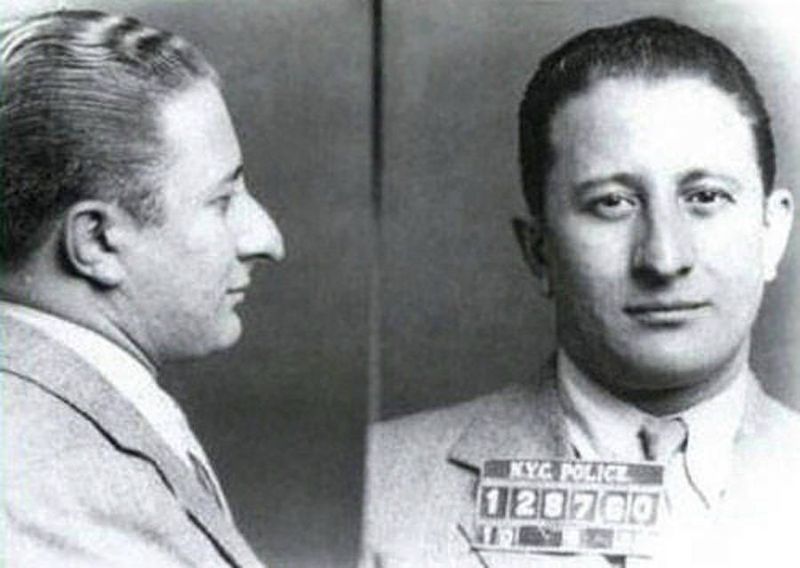
Soft-spoken and strategic, Carlo Gambino built the most powerful crime family in America without drawing attention to himself. Unlike flashier mobsters, he avoided publicity and lived modestly in a Brooklyn home.
Rising to power after the Apalachin Meeting disaster exposed many mob leaders, Gambino ruled through loyalty and calculated moves. His business acumen transformed the Gambino family into a criminal powerhouse.
When he passed away of natural causes in 1976, he achieved something few in his position managed: a peaceful end after a long, profitable career in organized crime.
10. Sam Giancana: Chicago’s Political Puppet Master

Charismatic and politically connected, Giancana controlled Chicago’s underworld while mingling with celebrities and politicians. His reputed role in Kennedy’s 1960 election victory through union muscle showcased his extraordinary influence.
Giancana shared a mistress with JFK and allegedly worked with the CIA on a Castro assassination plot. His power began crumbling when the Kennedys turned against him.
In 1975, he was shot in his home while cooking sausages, just before he was scheduled to testify about mob-CIA connections, taking many secrets to his grave.
11. Vito Genovese: Ambitious Usurper

Power-hungry and ruthless, Genovese seized control of his crime family through cunning and violence. After fleeing to Italy to escape murder charges, he curried favor with Mussolini’s regime before returning to America.
His ambition culminated in the disastrous Apalachin Meeting of 1957, where police raided a gathering of mob bosses he organized. This exposed organized crime’s national structure to a disbelieving public.
Convicted on narcotics charges in 1959, Genovese continued ruling his family from prison until his passing in 1969, cementing his reputation as one of the mob’s most ruthless leaders.
12. Albert Anastasia: Lord High Executioner
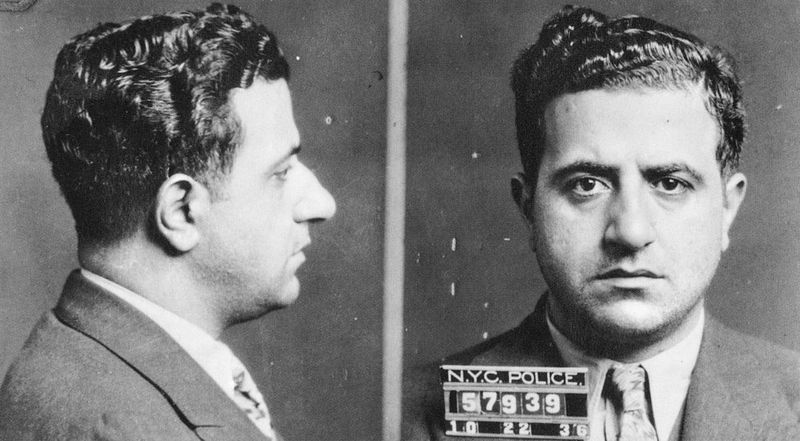
Terrifying even to fellow mobsters, Anastasia co-founded Murder Inc., the enforcement arm of the Italian-American mafia. His squad of professional murderers eliminated hundreds of targets with clinical efficiency, earning him his chilling nickname.
Despite his fearsome reputation, Anastasia’s own end came suddenly. While sitting in a barber’s chair at the Park Sheraton Hotel in 1957, two gunmen entered and fired five shots into his body.
The infamous barbershop assassination remains one of organized crime’s most iconic hits, ending the reign of one of its most feared enforcers.
13. Frank Nitti: Capone’s Enforcer
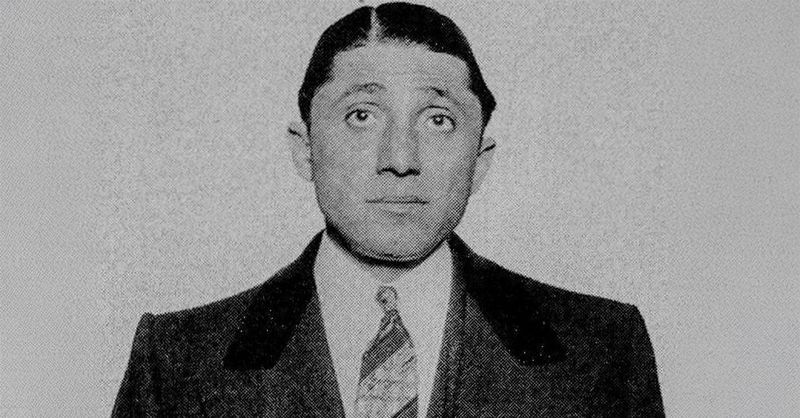
Known as “The Enforcer,” Nitti served as Al Capone’s loyal lieutenant before taking over the Chicago Outfit. Despite his fearsome reputation, he preferred strategic planning to hands-on violence, managing the business side of organized crime.
Claustrophobic after a near-fatal police shooting, Nitti feared returning to prison when indicted in a Hollywood extortion case. Rather than face incarceration, he shot himself near a railroad track in 1943.
His suicide marked the end of Capone’s inner circle and ushered in a new era for Chicago’s underworld.
14. Mickey Cohen: Hollywood’s Gangster
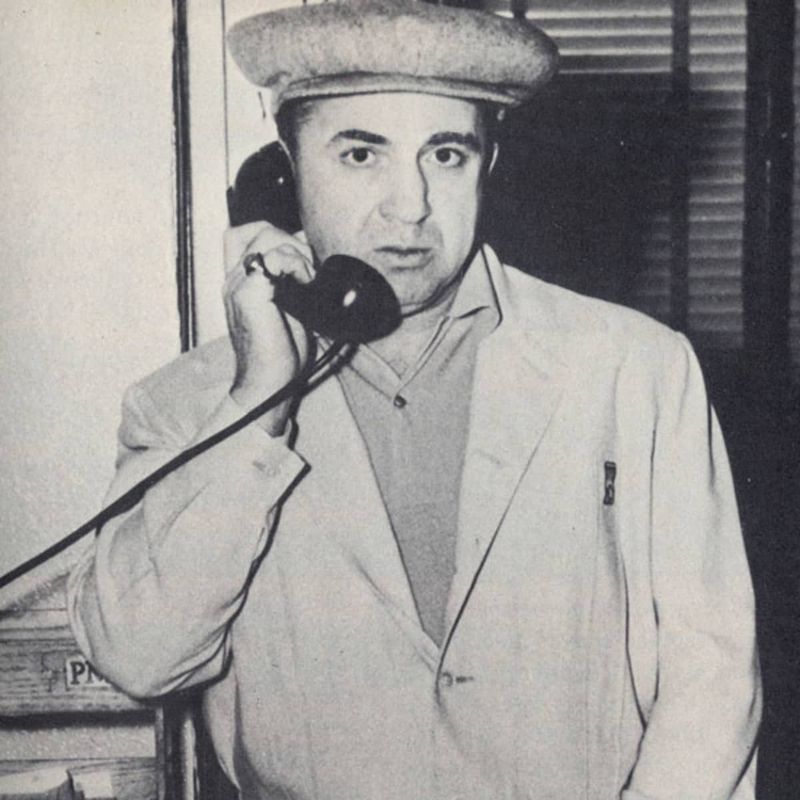
Flamboyant and publicity-seeking, Cohen brought East Coast mob tactics to sunny California. The former boxer controlled Los Angeles gambling, extortion, and protection rackets while cultivating celebrity friendships and media attention.
Cohen survived multiple assassination attempts, including a bombing of his home. His high-profile lifestyle made him a target for both rivals and law enforcement.
Eventually imprisoned for tax evasion, Cohen’s reign represented the golden age of West Coast organized crime.
15. Joseph Bonanno: Man of Honor

One of the original bosses who established the Commission, Bonanno believed in old-world Sicilian values despite his modern criminal enterprise. His family remained one of the most powerful in New York for decades under his disciplined leadership.
Bonanno’s attempted power grab in the 1960s, known as “The Banana War,” ended with his kidnapping and forced retirement. Unlike most mobsters, he lived to old age, even publishing an autobiography called “A Man of Honor.”
16. Carmine Galante: Cigar-Chomping Murderer

Ruthless and ambitious, Galante’s trademark cigar became an eerie symbol in dark photographs after his spectacular assassination. As acting boss of the Bonanno family, he expanded their heroin trafficking operations while eliminating rivals.
His brutal efficiency earned him the nickname “Lilo,” meaning “cigar” in Sicilian. Galante’s reign ended violently in 1979 when masked gunmen interrupted his lunch at a Brooklyn restaurant.
17. Paul Castellano: The Howard Hughes of the Mob
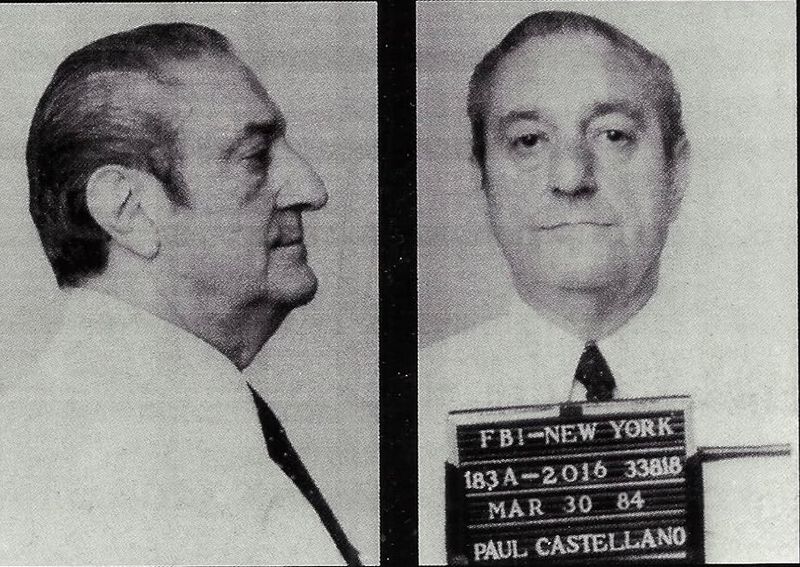
Aristocratic and business-minded, “Big Paul” Castellano ran the Gambino family like a corporation rather than a street gang. His Staten Island mansion, known as “The White House,” symbolized his separation from traditional mob culture.
Castellano focused on white-collar crimes and legitimate businesses, distancing himself from drugs and prostitution. His refined approach created resentment among street-level captains like John Gotti.
In December 1985, Gotti orchestrated Castellano’s assassination outside Sparks Steakhouse in Manhattan, a brazen public execution that shocked even hardened mobsters and signaled a new era of mafia violence.
18. Joe Masseria: Old-School Boss
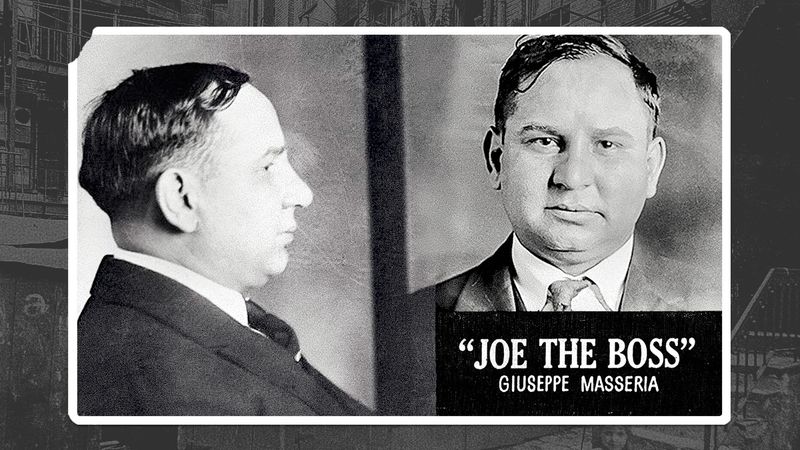
Known as “Joe the Boss,” Masseria controlled New York’s Italian underworld during Prohibition with an iron fist. His old-fashioned beliefs and resistance to working with non-Sicilians sparked the bloody Castellammarese War against rival Salvatore Maranzano.
Masseria’s reign ended in classic mob fashion. While dining at a Coney Island restaurant in 1931, he was gunned down by his own men who had secretly aligned with Maranzano.
19. Vincent “The Chin” Gigante: The Oddfather
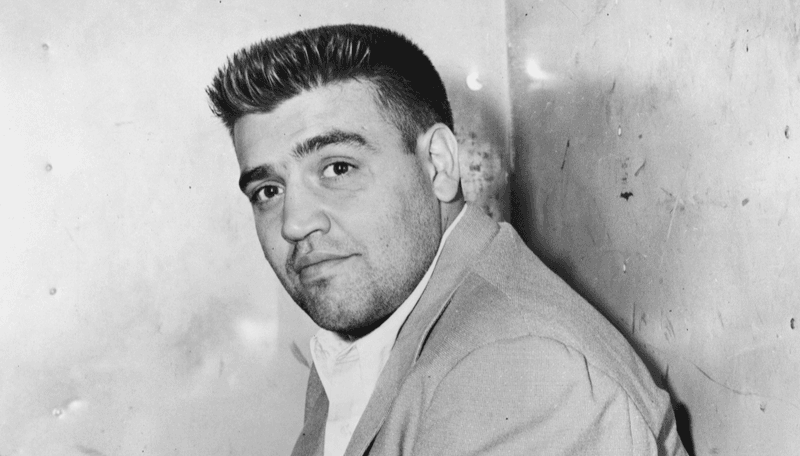
Master of deception, Gigante wandered Greenwich Village in bathrobe and slippers for decades, pretending to be mentally ill to avoid prosecution. This elaborate act earned him the nickname “The Oddfather.”
Behind the crazy act, Gigante secretly ran the Genovese crime family with ruthless efficiency. His bizarre behavior fooled authorities for years until informants exposed the ruse.
Finally convicted in 1997, Gigante admitted his decades-long deception in 2003.
20. Salvatore Maranzano: The Boss of Bosses

Scholarly and ambitious, Maranzano briefly reigned as America’s first “Boss of Bosses” after winning the Castellammarese War. A student of Julius Caesar and Roman military tactics, he structured the modern mafia into the five families system still recognized today.
His victory proved short-lived. Just five months after eliminating rival Joe Masseria, Maranzano himself was murdered in his Manhattan office by hitmen posing as tax agents.
The September 1931 assassination, orchestrated by Lucky Luciano, marked the end of the old Mustache Pete era and the beginning of the modern American mafia.
21. Anthony “Tony Ducks” Corallo: The Invisible Don

Earning his nickname from his remarkable ability to “duck” convictions, Corallo led the Lucchese family with a low profile that kept him largely out of headlines. Unlike flashier bosses, he shunned the limelight while building a powerful criminal organization.
Corallo’s downfall came through modern surveillance when FBI agents bugged his car, recording damning conversations with his driver. These “Jaguar Tapes” led to his conviction in the Commission Case of 1986.
Sentenced to 100 years, the aging boss passed away in prison in 2000, his once-legendary ability to evade justice finally exhausted.
22. Joseph Colombo: The Public Mobster
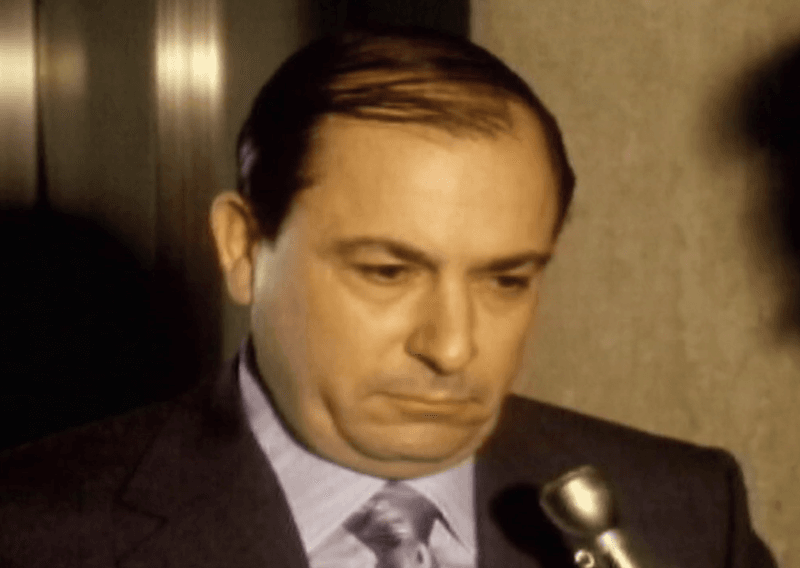
Breaking the mafia’s code of silence, Colombo founded the Italian-American Civil Rights League to protest FBI harassment. This unprecedented move into public activism made him both famous and vulnerable as he organized rallies against anti-Italian stereotypes.
His public crusade ended violently at his own rally in 1971. A gunman approached and shot Colombo in the head at Columbus Circle, leaving him paralyzed for seven years before his end.
The assassination remains controversial as some believe rival mobsters ordered the hit to silence his attention-drawing activism, while others suspect government involvement.
23. Crazy Joe Gallo: Gangster Rebel

Charismatic and unpredictable, Joey Gallo befriended artists and intellectuals while plotting mob rebellions. His Greenwich Village apartment became a salon where gangsters mingled with celebrities, creating a unique bridge between the underworld and bohemian culture.
Gallo’s revolutionary ideas and willingness to work with Black and Hispanic gangs threatened traditional mob power structures. His flamboyant life ended dramatically on his 43rd birthday in 1972.
While celebrating at Umberto’s Clam House in Little Italy, gunmen burst in and murdered him, creating a scene straight from the gangster movies he so admired.
24. Abe “Kid Twist” Reles: The Canary Who Sang
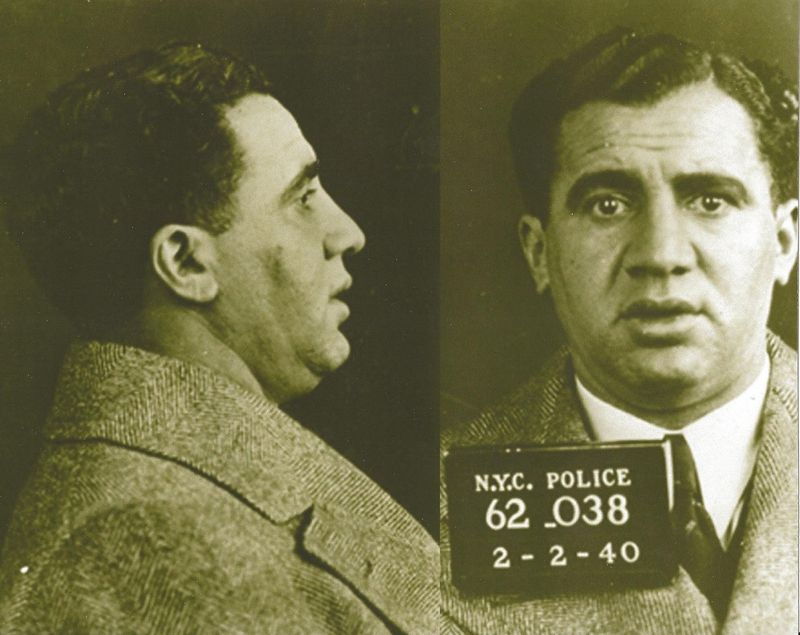
Murder Inc.’s most feared assassin transformed into its most damaging informant. Reles earned his nickname from his preferred method of murdering: strangling victims with an ice pick through the eardrum, giving it a “twist.”
Facing charges in 1940, Reles made the unprecedented decision to cooperate with authorities. His testimony sent several colleagues to the electric chair. While under police protection at Coney Island’s Half Moon Hotel in 1941, Reles mysteriously fell from a window.
Whether he jumped, was pushed, or was thrown remains debated, but his legacy as “the canary who sang” changed mob history forever.
25. Nicodemo “Little Nicky” Scarfo: Philadelphia’s Bloody Don

Standing just 5’5″, Scarfo compensated for his small stature with extraordinary viciousness. His reign over Philadelphia’s mob in the 1980s was marked by paranoia and unprecedented bloodshed, as he ordered at least two dozen murders of perceived enemies and rivals.
Scarfo’s brutality decimated Philadelphia’s once-stable crime family. Even loyal soldiers lived in fear of his unpredictable rage. His downfall came when multiple associates turned government witness rather than face his wrath.
Sentenced to life imprisonment in 1988, Scarfo passed away in prison in 2017, leaving behind a legacy as one of organized crime’s most destructively violent leaders.
26. Carmine “The Snake” Persico: The Last Don
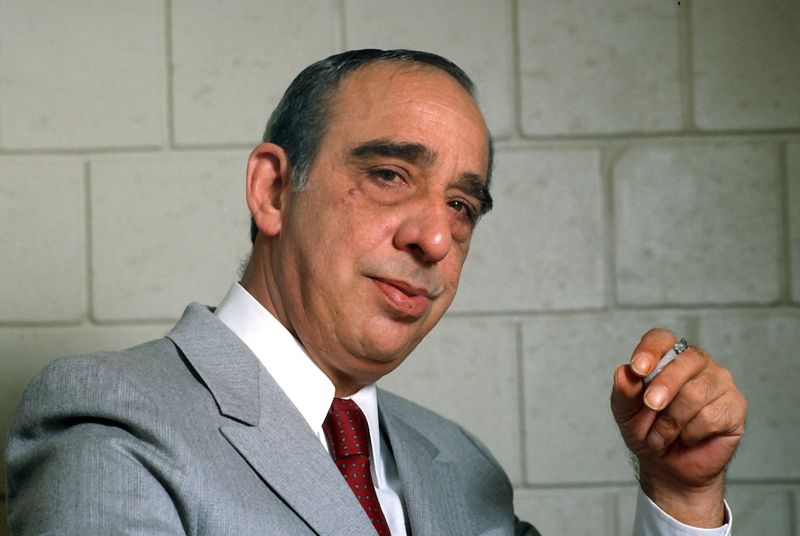
Resilient and cunning, Persico earned his reptilian nickname by surviving decades of mob wars and government prosecutions. Despite spending most of his adult life behind bars, he maintained iron control over the Colombo family through relatives and loyal captains.
Persico’s legal brilliance allowed him to represent himself at the famous Commission Trial, though he still received a 100-year sentence. From prison, he orchestrated a bloody family war in the 1990s against a rebellious faction.
When he passed away in 2019 at 85, after 36 years of incarceration, Persico represented the last of the old-school dons whose influence spanned generations of mob history.
